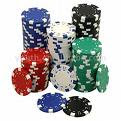 met·a·mor·pho·sis (mt-môrf-ss)n. pl. met·a·mor·pho·ses (-sz) A change in the form and often habits of an animal during normal development after the embryonic stage.
met·a·mor·pho·sis (mt-môrf-ss)n. pl. met·a·mor·pho·ses (-sz) A change in the form and often habits of an animal during normal development after the embryonic stage.Over dinner the other day, this analogy emerged. In our time as martial artists and spiritual beings, we undergo various metamorphoses. This raises a subtle, but very important point which led to this analogy.
The discussion was about masters undergoing purification in order to achieve the next level of their spirituality, usually by fasting, meditiation, and other cleansing actions.
I would contend that if we transform our lifestyle or habits with a particular objective in mind, in the Zen sense, we have already failed to achieve it. That is, the very act of doing something for purposes of a desired outcome takes us away from the "Natural Law" and then causes us to have attachment, and inevitably, loss (or fear of loss).
Caterpillars become butterflies because it is the natural order of things that they do so. Being incapable of desire (as far as we can tell), they follow the natural order moment by moment, without regret and without rushing.
As martial artists and spiritual people, I believe we must learn to "let go" and give in to the natural law in order to become butterflies - wishing it would be so, or bemoaning the fact that we are caterpillars, or even worse comparing ourselves to other caterpillars who may be already in their cocoons transforming, belittles us and makes it much harder for transformation to take place. A true master will undergo purification simply because it is what must be done at that time, not with the express goal of progression. Zen tells us "When I am hungry, I eat; when tired, I sleep". This is to remind us to align ourselves with the Natural Law of things, and be accepting of ourselves in every moment, allowing things to happen when they must, not before.
This is not an excuse in favor of pre-determinism, other than to say that all human beings have an innate potential to progress and transform. it is still of critical importance that we give maximum effort to our lives in every day and every way, moment by moment.
The good news is that it is the basic nature for caterpillars to become butterflies.
The bad news is that far too many human "caterpillars" obsess over it.
Good training should help free us from these worries, and allow us to be "maximum caterpillar" until we enter our cocoons, and then "maximum butterfly" when we emerge.
Be careful we do not become moths instead.

























